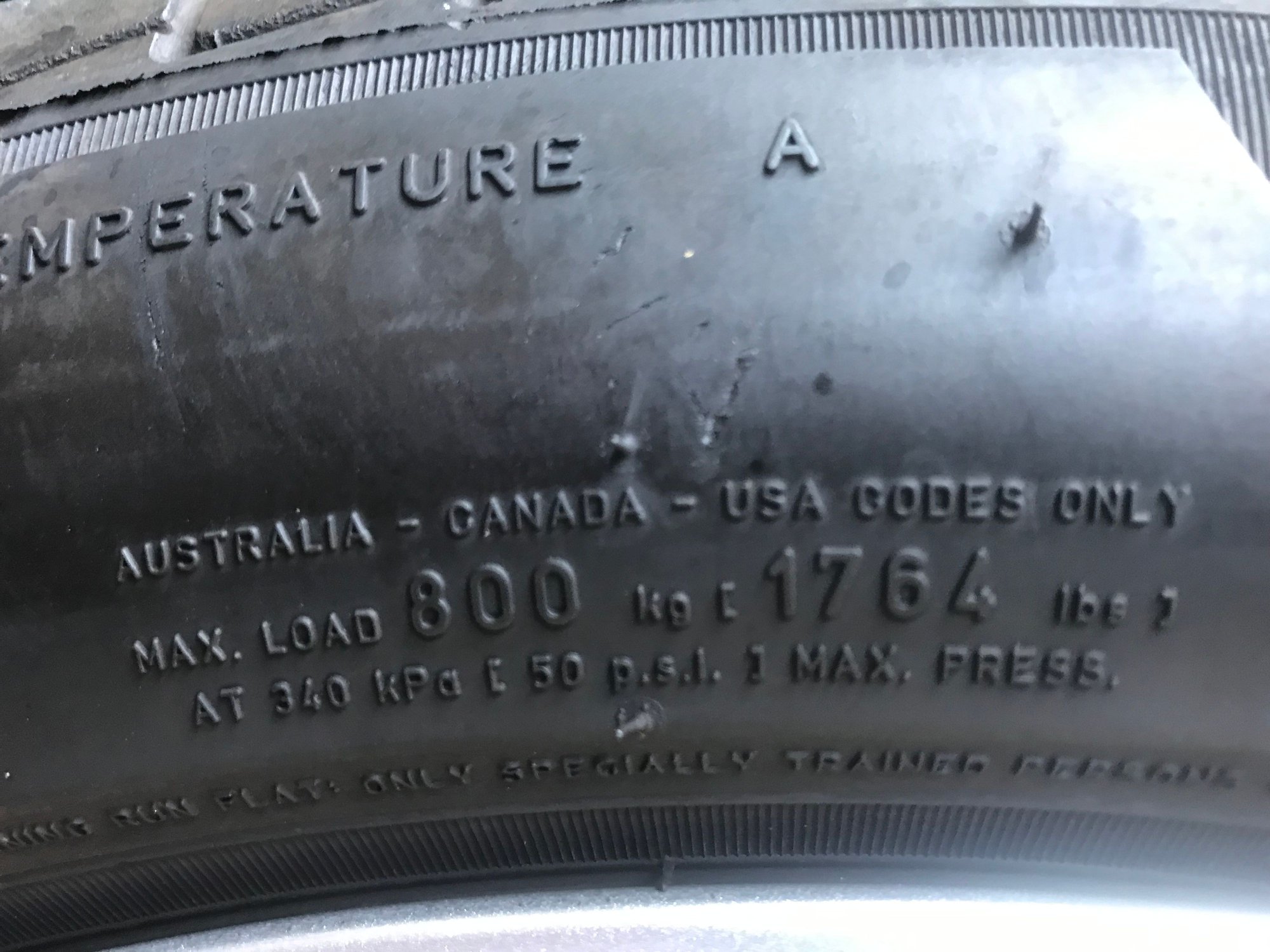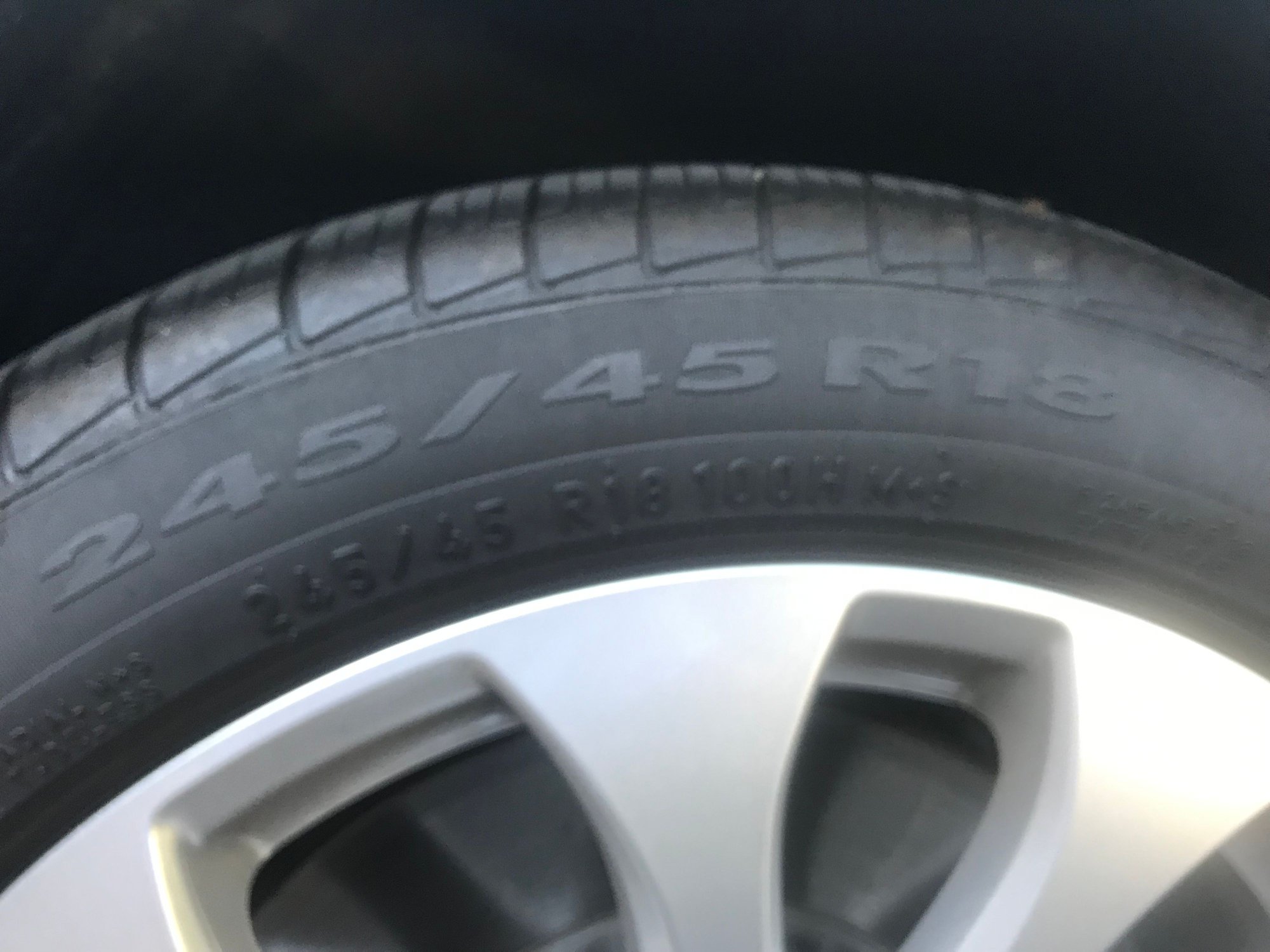2017 e300 Sedan - Correct tire pressure?
#26
MBWorld Fanatic!
Join Date: May 2018
Location: Long Island, NY
Posts: 2,013
Received 575 Likes
on
434 Posts
2019 E 450, 2016 E350 4matic (retired), 2018 Ford Edge Sport, 2008 Porsche Boxster



I do not know about the CLS53: What is the recommended pressure in the fuel flap - which as you know changes from country to country and model to model and tire to tire?
On my E450 the tire size is 245/45 R18 Extra Load with a recommended psi normal load: 33/33: Maximum load 35/40. The maximum psi is 50.
For sustained driving above 100 mph add 4 psi.
Note: the recommended tire pressure under maximum load for 19 inch is 35/42.
Last edited by JTK44; 09-20-2019 at 09:01 AM.
#27
Junior Member
Thanks for the information. I misspoke regarding the recommended pressures, they are higher than I thought! For the CLS 53 (20 inch Pirelli summer tires) recommended tire pressures are 48 PSI (rear) and 44 PSI (front) for full load/high speed driving. Max tire pressure is 50 PSI on sidewall. This in the USA. I find it hard believe MB would recommend cold pressures that high for performance driving if there was a safety issue.
#28
MBWorld Fanatic!
Join Date: May 2018
Location: Long Island, NY
Posts: 2,013
Received 575 Likes
on
434 Posts
2019 E 450, 2016 E350 4matic (retired), 2018 Ford Edge Sport, 2008 Porsche Boxster
Dear ncdoc:
As compared to my tires:
Mine are all season yours are summer tires
Mine are 18 inch yours are 20 inch
It would seem that as wheel size increases, sidewall decrease and recommended tire pressure increases.
Finally as we all know, in both sand and snow for example, we decrease not increase tire pressure. As my tires are all season, designed for traction in snow, they would run at a lower pressure than summer tires.
That is why I posted to be guided by the recommended pressure in the fuel flap which takes into consideration wheel size, tire size and type of tire. I add 10% to the recommended psi.
As compared to my tires:
Mine are all season yours are summer tires
Mine are 18 inch yours are 20 inch
It would seem that as wheel size increases, sidewall decrease and recommended tire pressure increases.
Finally as we all know, in both sand and snow for example, we decrease not increase tire pressure. As my tires are all season, designed for traction in snow, they would run at a lower pressure than summer tires.
That is why I posted to be guided by the recommended pressure in the fuel flap which takes into consideration wheel size, tire size and type of tire. I add 10% to the recommended psi.
#29
MBWorld Fanatic!
Join Date: Apr 2006
Location: Dallas-Ft.Worth,TX
Posts: 4,641
Received 1,751 Likes
on
1,121 Posts
2016 E350 Sport
Last post to JTK44...
You assume the psi will increase by 6-8 psi. IT DOES NOT. I drove 80 miles one-way at Interstate speeds last weekend. Cold tire pressure at start was 42psi (50psi-15%). Half hour into that 80 mile trip, the TPMS pressure rose to 45-46, and stabilized at that pressure the rest of the trip (an increase of only 3-4psi, at ambient Texas temp of 95°). I had just topped off the tires before that weekend, and monitored the TPMS readings throughout both one-way trips.
I simply beg to differ. My ride-o-meter (my butt) senses little increase in ride harshness at all. In the last 20 years, this tire philosophy has yielded ZERO blowouts and ZERO rim damage, among 4 different cars (2 MBs). My 2001 C320 has 130,000 miles on it, and discounting the poor performance of the OEM Pirellis (first 20K miles), the remaining 110,000 miles have been covered by 2 sets of tires, plus a barely used third set (45,000 miles per each, easy)
The grease buildup on Texas roads between infrequent rainstorms can be heavy, causing drama for drivers unprepared to stop in the rain. That said, whenever it rains here, it pours buckets. I can assure you, my car's ability to stop in the rain -- even on greasy roads -- is just as good as yours. No different than several legitimate sports cars I've owned in the past.
Last post to DFWDUDE:
If you start at 44/46 psi cold (10% to 15% less than max 51 psi) after driving an hour on the interstate when the ambient temperature is 85 degrees or higher, the temperature in the tires will be above 115 degrees and the psi will increase by 6 to 8 resulting in a psi above 51 the maximum. This will be dangerous.
If you start at 44/46 psi cold (10% to 15% less than max 51 psi) after driving an hour on the interstate when the ambient temperature is 85 degrees or higher, the temperature in the tires will be above 115 degrees and the psi will increase by 6 to 8 resulting in a psi above 51 the maximum. This will be dangerous.
The grease buildup on Texas roads between infrequent rainstorms can be heavy, causing drama for drivers unprepared to stop in the rain. That said, whenever it rains here, it pours buckets. I can assure you, my car's ability to stop in the rain -- even on greasy roads -- is just as good as yours. No different than several legitimate sports cars I've owned in the past.
Last edited by DFWdude; 09-20-2019 at 09:47 AM.
#30
Interesting input. I was reading in another thread that for runflats, inflating higher actually improves road comfort. Something about giving stability to the sidewalls. Have others experienced this as well?
#31
Super Member
Do we care what AMG CLS tire pressures should be (when driven hard, yet) when we're in the E-Class forum giving tire advice to the owner of a 2017 E300???
The /starting/ point for any tire pressure should be the car manufacturer's recommended pressure for the conditions being driven. Yes, there are some gains to be made by adding some pressure, but trade-offs as well, so at the discretion of the user. TIRE manufacturers do NOT recommend pressures for their tires, they only give maximum pressures.
The /starting/ point for any tire pressure should be the car manufacturer's recommended pressure for the conditions being driven. Yes, there are some gains to be made by adding some pressure, but trade-offs as well, so at the discretion of the user. TIRE manufacturers do NOT recommend pressures for their tires, they only give maximum pressures.
Last edited by rraisley; 09-20-2019 at 04:45 PM.
The following users liked this post:
JTK44 (09-20-2019)
#32
Junior Member
My point was not to bring up CLS tire pressures for an E-class. It was to say that higher pressures do not necessarily make for a more dangerous ride. Follow whatever recommendations you like.
#33
Super Member
Follow whatever recommendations you like.
#34
Junior Member
Thanks for the reply. I agree with what you are saying. As you could guess the CLS forum is dead and the discussion here is more interesting.
#35
MBWorld Fanatic!
Join Date: May 2018
Location: Long Island, NY
Posts: 2,013
Received 575 Likes
on
434 Posts
2019 E 450, 2016 E350 4matic (retired), 2018 Ford Edge Sport, 2008 Porsche Boxster
At high speeds, without increased pressure, the stability of the tire is compromised. This causes heat build up which may lead to catastrophic tire failure.
As per the instructions in the fuel flap, for sustained speeds over 100 mph, increase pressure by 4 psi.
For the rest us use the recommended pressure or a little bit more - I use 10% more.
As per the instructions in the fuel flap, for sustained speeds over 100 mph, increase pressure by 4 psi.
For the rest us use the recommended pressure or a little bit more - I use 10% more.
#36
Super Member
Well, DUH! They're all all /driving/ their AMGs, while we're talking about our cars. Can't blame them. I'd LOVE to be getting an AMG GT 4-Door Coupe, but didn't really want to go there (you know, the poor house, driving my AMG). Coincidentally, I was just adding up what a non-AMG E Wagon would cost with ALL POSSIBLE OPTIONS: Right at $99,000. Which just happens to be the base price of the AMG GT 4-Door Coupe! "Uh, honey, I'd like to make a small change in our Mercedes order....."
The following users liked this post:
ncdoc (09-21-2019)







